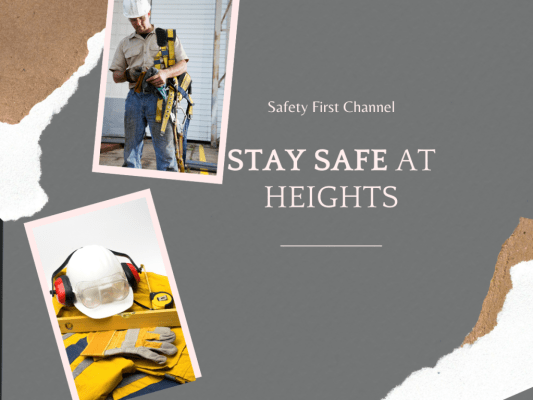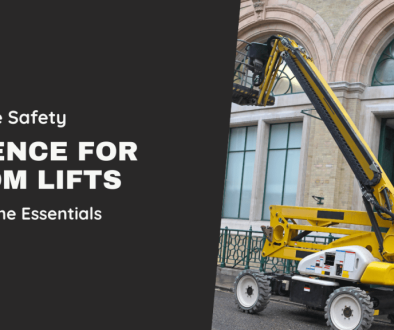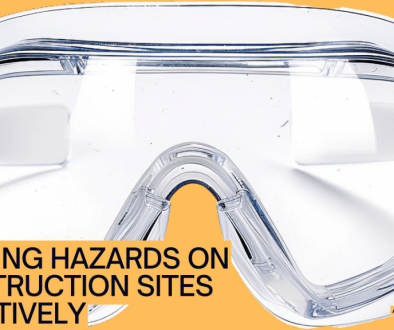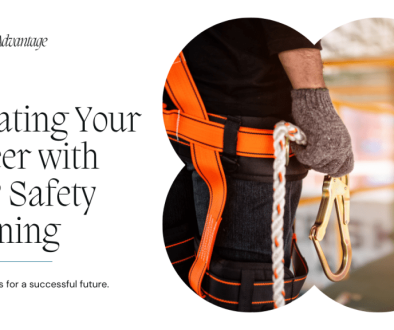Work Safely at Heights Essential Safety Practices
Tom, an experienced roofer from Penrith, thought he knew all there was to know about working safely at heights. One day, while working on a two-story residential roof, a strong gust of wind hit just as he was moving materials. Had it not been for his safety harness, the story could have ended very differently. Working at heights is one of the most dangerous tasks on a job site, and statistics back this up—Safe Work Australia reported that falls from heights accounted for over 27% of workplace fatalities in 2023. This article explores why working at heights demands caution and the essential practices that can help prevent accidents.
Why Working at Heights Is Dangerous
Statistics on Falls and Injuries
Falls from heights are a leading cause of workplace injuries and fatalities in Australia. In 2023 alone, over 4,000 compensation claims were filed due to falls from heights, with construction and maintenance workers being most at risk. These accidents aren’t just limited to multi-story buildings; even a fall from a single-story height can lead to life-altering injuries.
Contributing Factors
Several factors increase the risk of falls:
- Weather Conditions: Wind, rain, and heat can make surfaces slippery or equipment harder to handle.
- Improper Use of Equipment: Skipping equipment checks or using improper gear can lead to disaster.
- Human Error: Simple mistakes, such as misjudging a step or rushing, can result in dangerous falls.
Key Safety Practices for Working at Heights
Use the Right Safety Equipment
One of the first rules of working at heights is to have the right equipment, which includes:
- Harnesses and Lanyards: A harness can mean the difference between life and death. Ensure the harness fits correctly and inspect it for any signs of wear before use.
- Guardrails and Safety Nets: Guardrails provide a physical barrier, while nets act as a backup in case of falls. Both should be installed by trained professionals.
- Anchorage Points: Choose solid, reliable anchor points and attach your harness to them. Test anchor points regularly to ensure they remain secure.
Inspect and Maintain Equipment Regularly
Equipment maintenance is crucial. Even a minor fault in a harness or anchor can lead to severe consequences. Establish a routine for checking equipment before each use, and replace any worn-out or damaged items immediately. Record each inspection to ensure compliance with safety standards.
Use Proper Footwear
Footwear designed for height work can provide extra grip and reduce the chance of slipping. Non-slip, steel-toe boots are ideal as they provide added protection and stability.
The Role of Height Safety Training
What Height Safety Training Covers
Height safety training isn’t just about using a harness; it’s a comprehensive program covering:
- Fall Prevention: Understanding how to set up and use fall prevention systems like guardrails and scaffolding.
- Rescue Procedures: Learning how to assist someone who has fallen and is suspended in a harness.
- Risk Assessment: Identifying and mitigating potential hazards before starting work.
Practical Benefits of Training
Proper training enables workers to assess risks accurately, use equipment confidently, and react swiftly in emergencies. For example, a construction worker who has completed height safety training is more likely to recognise an unstable ladder or detect weather-related hazards early on.
Understanding and Following Regulations
Legal Requirements in Australia
Australian law mandates strict requirements for anyone working at heights, outlined in the Work Health and Safety (WHS) Regulations. Businesses are required to provide appropriate training and safety gear for workers performing tasks over two meters high. Fines for non-compliance can be substantial.
How Regulations Protect Workers
These regulations aren’t just bureaucratic red tape; they’re designed to protect workers and create accountability. The WHS guidelines emphasise the use of the safest work methods, which means reducing the need to work at heights whenever possible.
Real-World Scenarios Where Safety Practices Saved Lives
Case Study: Windy Conditions on a Melbourne Site
In 2022, a team working on a new office building in Melbourne faced unusually high winds. Thanks to their training, they recognised the risk and decided to stop work, setting up additional safety nets and securing loose materials. Their decision prevented what could have been a disastrous accident involving falling debris.
The Importance of Proper Equipment: A Sydney Roofer’s Story
A roofer in Sydney was saved by his harness when he slipped on a wet roof. His equipment had been checked thoroughly before he began work, and his harness was attached to a secure anchor point. Without these precautions, the fall could have resulted in serious injury.
Common Misconceptions About Working at Heights
“I Only Need a Harness for Tall Buildings”
Many workers assume that a harness is only necessary for high-rise buildings. However, even a fall from a height of two meters can cause serious injury. It’s vital to use safety equipment no matter the height, as a simple trip or slip can have devastating consequences.
“I’ve Been Doing This for Years—I Don’t Need Training”
Experience is invaluable, but complacency is dangerous. Even seasoned workers can benefit from regular training sessions, which refresh safety protocols and introduce new practices. Ongoing training also ensures workers stay compliant with the latest safety standards.
Tips for Staying Safe While Working at Heights
Plan for Weather Changes
Weather can be unpredictable, especially in regions like Queensland, where sudden storms are common. Check forecasts before working at heights, and have a plan to secure tools and equipment in case of high winds or rain.
Use a Spotter
If possible, have a spotter on the ground to keep an eye out for hazards you might miss. Spotters can alert you to loose equipment, shifting ground, or changes in weather conditions that may impact safety.
Conduct Regular Safety Briefings
Hold a quick safety meeting at the start of each day or shift. Review equipment, discuss any hazards, and remind the team of best practices. These briefings ensure everyone is on the same page and help prevent avoidable mistakes.
Encouraging a Safety-First Culture
Lead by Example
Managers and team leaders set the tone for safety culture. If supervisors prioritise safety and lead by example, workers are more likely to adopt safe practices. This culture can reduce accidents and improve morale.
Open Communication
Encourage workers to speak up if they notice a hazard. Some might hesitate to raise concerns out of fear of slowing down work, but it’s essential to address risks promptly. A supportive culture where workers feel comfortable voicing concerns can prevent accidents.
Invest in Ongoing Training
Safety regulations and best practices evolve over time. Investing in periodic refresher courses keeps workers informed and reinforces a safety-first mindset.
To Summarise
Working safely at heights is about more than just ticking boxes—it’s about ensuring that every worker goes home safely at the end of the day. From choosing the right equipment to following strict safety protocols, each step plays a crucial role in minimising risks. Like Tom in Perth, you never know when a harness or guardrail will make all the difference. With construction projects increasing across Australia, the demand for skilled, safety-conscious workers is only growing. Prioritise your safety and consider enrolling in height safety training today. It could save your life.
“Achieve more, become more with Achieve Training Services”
To Your Success
Vic and The Team at Achieve
References
- Safe Work Australia, “Work-Related Traumatic Injury Fatalities Report, 2023”
- Australian Work Health and Safety Regulations, “Regulations for Working at Heights”




